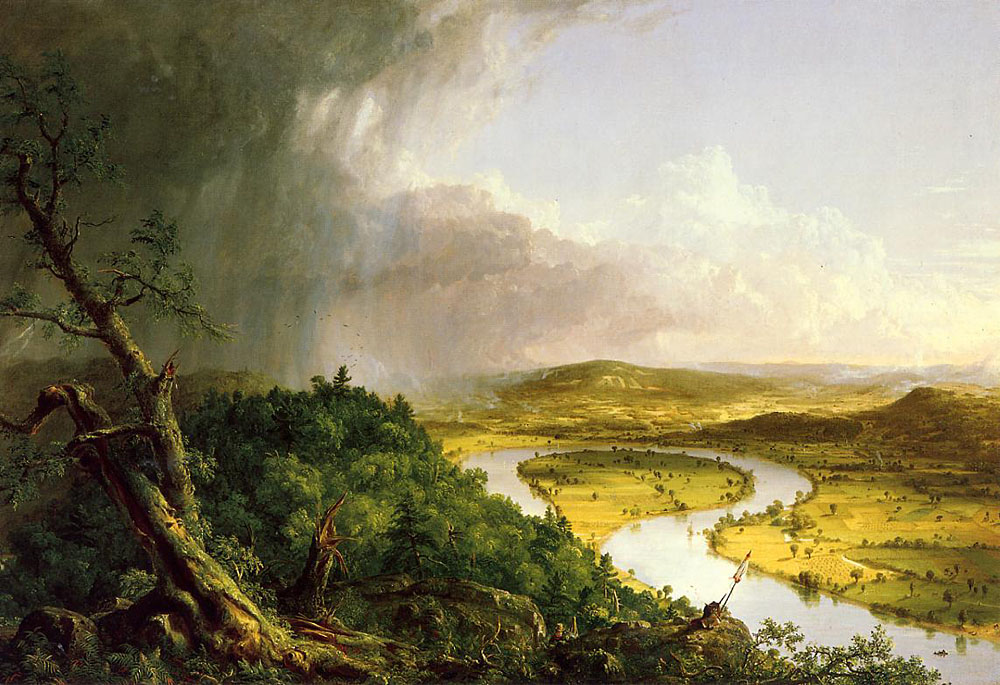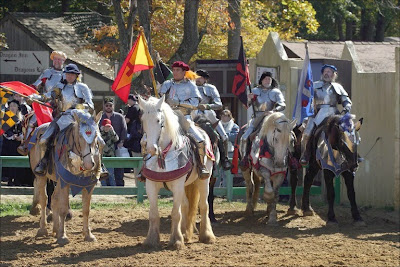One of my favorite wings in the Metropolitan Museum of Art is the American wing. Inside, are massive paintings showing the American landscape and beauty. The Hudson River School is the School of art that is responsible for these early American masterpieces. The Hudson River School founded in the mid nineteenth century, finds its roots in the Romantic period that was occurring in Europe. The Romantic period made landscape painting popular. Before this period, landscape was looked down upon by artists. They believed that paintings should include subjects. Painters, such as Frans Hall, would not have normally painted scenes of merely landscape. He painted for patrons who wanted portraits. Starting in Europe in the seventeenth century with Claude Lorrain, and continuing with John Constable in the early nineteenth century, landscapes began becoming more acceptable. This style of painting travelled to America and resonated there.
During this time in American History, the west had just been opened up to the small country. In 1803, President Thomas Jefferson purchased the Louisiana territory from France, and sent Meriwether Lewis and William Clark to explore the newly acquired territory. By 1853, with the signing of the Gadsden Purchase, we had acquired all of the continental United States through treaties and wars. People were fascinated with all of the newly acquired land. Many people went exploring including the artists. The landscape artists were looking for majestic scenes to paint, and they found them in the untouched land of the west.
I love the paintings for more than just their beauty. In the paintings, there are hints of political agenda. Manifest Destiny, the belief that America is destined by God to spread from sea to sea, was beginning to take root during the nineteenth century. These landscape paintings promoted Manifest Destiny through their use of light. Previously in art, light had been used to shine upon the most important subject, and show that God approved of him. Now light was being used to show that God approved of the nation spreading out to the Pacific Coast.
An example of the Hudson River school is Thomas Cole. He is the founder of the Hudson River school. Cole painted many landscapes among them is View from Mount Holyoke, Northampton, Massachusetts, after a Thunderstorm, or more commonly known as, the Oxbow. He painted this picture in 1836 on oil on canvas. The subject of the painting is the contrast between the domesticated and cultivated lands and the wild lands of Massachusetts. He shows his preference on the two with the use of color. He uses soft hues for the cultivated lands, while he uses dark and menacing colors for the untouched land. The storm is lingering over the wild land, while the domesticated land is bathed in sunlight. This painting was done during time the nation’s desire to expand, and control the vast wilderness in the west.




 While looking for articles in the Arts section of the New York Times, I came across “When the Camera Takes Over for the Eye,” and it hit too close to home. I immediately knew this was the article I wanted to blog about because I am the type of person the article mentions. The article is about the New York Times photographer, Ruth Fremson, who came back from the Venice Biennale with pictures of people photographing the art as opposed to just looking at the art. Unfortunately if I had been at the Venice Biennale, I would have been photographed photographing the art. The article made me laugh at myself, and vow that next time I venture to an art exhibit, I will leave my camera behind.
While looking for articles in the Arts section of the New York Times, I came across “When the Camera Takes Over for the Eye,” and it hit too close to home. I immediately knew this was the article I wanted to blog about because I am the type of person the article mentions. The article is about the New York Times photographer, Ruth Fremson, who came back from the Venice Biennale with pictures of people photographing the art as opposed to just looking at the art. Unfortunately if I had been at the Venice Biennale, I would have been photographed photographing the art. The article made me laugh at myself, and vow that next time I venture to an art exhibit, I will leave my camera behind.